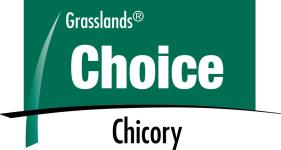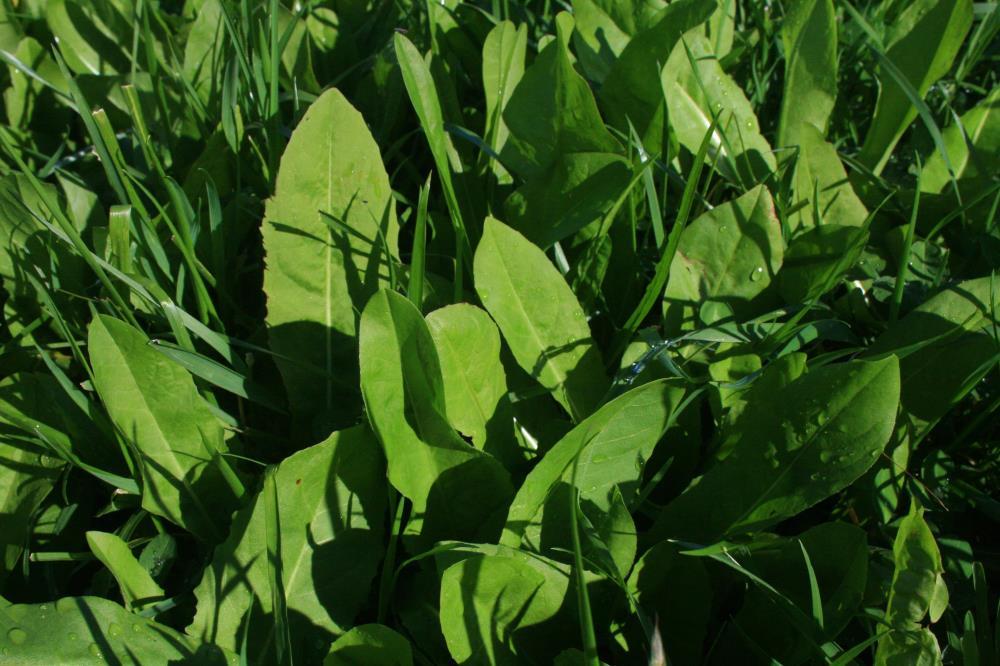Choice
NEW ZEALAND BRED CERTIFIED CHICORY.

- Perenniality Perennial
- Grazing Seasons Spring, Summer
Choice was bred in New Zealand by AgResearch Grasslands, the breeders of the original forage chicory, Puna. Compared to the original Puna, Choice has a uniform full strap leaf and is fully green in colour. Choice was bred from true perennial chicory parents under grazing evaluation and selected for high drymatter production, improved cool season growth and recovery from grazing. Choice has been bred with very good leaf disease tolerance.
Choice gives high volumes of good quality summer feed for increased animal production. It is commonly used as a pure stand summer crop for milk production and finishing systems. Choice is a good source of minerals (particularly Zn, Cu, Mg, P, Ca, K).
Choice is very productive over spring, summer and autumn, and is moderately active in mid-winter depending on the region of use. It is also one of the most drought tolerant plants available which is most expressed in fertile free draining soil.
Uses
There are two main ways that Choice chicory is used:
1. Mixed with a grass/clover pasture - this is the most common use of chicory because it requires very little change to pasture establishment and management practices. It is an easy way to increase animal production from a pasture. Seed is mixed at a rate of 1 to 3 kg/ha, depending on the content required.
2. As a special purpose crop - this requires different establishment and management practices to grass pastures. It is however, a more effective way of increasing animal performance because it provides a greater amount of high quality feed over summer. Seed is sown at 6 to 8 kg/ha often with the addition of red and white clover.

Sowing & Establishment
Key Tips
- Establish on a static or rising 12°C soil temperature
- Use nitrogen at sowing and then again after first grazing regardless of the inclusion of clover
- First graze should be at 7 true leaves which will be close 2,200 kg DM/ha
- Following first grazing, graze when 20 – 25 cm high and down to a post grazing residual of 4 cm
- For crops carried on for a second year, focus on late September and October grazing to attempt to prevent reproductive growth which will limit production and often persistence
- For six month cropping use full rates of chemical to check or kill chicory prior to perennial grass sowing in mid autumn. Failure to do this puts perennial pastures at risk of excessive chicory competition
- Seed Weight 1.2 grams (per 1,000 seeds)
- Sowing Rate 1 - 3 mixed sward, 6 - 8 pure stand
Performance Data
Choice has performed very well in trials and on-farm exhibiting good growth and has more production and persistence than other winter-active chicory cultivars.
As a summer crop, Choice is a very high quality feed source with Metabolisable Energy (ME's) of 11.5 to 13.0 MJ ME/kg DM and crude proteins of 22% to 27% at a time when unirrigated ryegrass can contain both low ME and low crude protein.
FAQ's
Choice chicory in dairy systems is a reliable crop for summer dry conditions once fully established. Chicory's deep tap root, high drymatter growth rates and excellent regrowth potential in hot conditions makes it a versatile summer crop. Choice has the ability to continue to supply quality feed beyond the point when most summer turnips are finished; an important feature in a year with extended dry conditions.
Choice can also be added to a pasture mix to improve summer production and quality enabling new pastures to carry higher quality feed later during dry summers.
How is Choice used on farm?
- Mixed with a grass/clover pasture
- As a special purpose crop
- Oversown into pasture
What are the key tips about sowing Choice for dairy cows?
- The amount you plan to feed your cows and your potential yield will determine how much Choice you should sow. This could be as much as 10% of your area
- Use Nitrogen (DAP) at sowing and then again after first grazing
- After planting Choice always roll the paddock
- Once you have planted Choice, aim to spray for weeds irrespective of crop growth stage when weeds are at the 2-4 true leaf stage
- Graze when the chicory is 20-25 cm high (redband gumboot height) and down to a residual of 4 cm
How is Choice established?
- Chicory is more sensitive than ryegrass to sowing depth and soil temperature. It establishes best when sown into warm soils (12° C +) at 10 mm in depth, and where there are low amounts of competition from other plants during the first three months.
- Spring sowing is highly preferred, and late-autumn plantings should be avoided as the ideal time for first grazing from a mid March planting is mid June.
- Weeds should be thoroughly eliminated before sowing because post establishment herbicides for chicory are limited. Some unregistered pre-emergence herbicides are used when establishing chicory without grass or plantain. Many weeds can be controlled in the early stages of establishment with Preside™ herbicide at recommended rates.
- Where it is expected that pastures will require a hormone spray after establishment, grass can be planted on its own with chicory (at least 3 kg/ha) and clover seed spread just before grazing in spring.
- Soil fertility should be the same as required for ryegrass/clover pastures. Nitrogen fertiliser improves establishment of chicory, especially when temperatures allow for active growth.
What are the principles of good management?
- Chicory is most productive and persistent when it is rotationally grazed, and spelled until 2-4 leaves/plant have fully re-grown (crop will have a mass of about 3000 kg DM/ha, or 15-20 cm height).
- Between spring and autumn this will mean a 21 to 35 day rotation.
- In mid-spring (October) of the second season, chicory plants will develop a reproductive stem. This should be grazed off, close to the ground, while it is small (< 10 cm) and soft (see photo). A second grazing just two weeks later will reduce stem regrowth for the rest of the season.
- Chicory is an extremely productive plant that is very responsive to large amounts of fertiliser. Its main requirement is nitrogen, and the clover in the sward will not be able to provide enough fixation for maximum chicory growth.
- Farms with specialist chicory pastures under irrigation are applying nitrogen (e.g. 60 kg/ha of urea) after every grazing, but for lower-input systems 2-4 applications of 80 kg/ha of urea over spring and early summer will be adequate for moderate carrying capacities.
- Phosphate, sulphur and potassium should be applied at maintenance rates that reflect the higher stocking rates (e.g. 200% of farm average).
- Specialist stands of chicory without grass will tend to get winter annual grasses (e.g. poa annua) after 1-2 seasons. These can be controlled with grass-selective herbicides to improve spring production and persistence.
